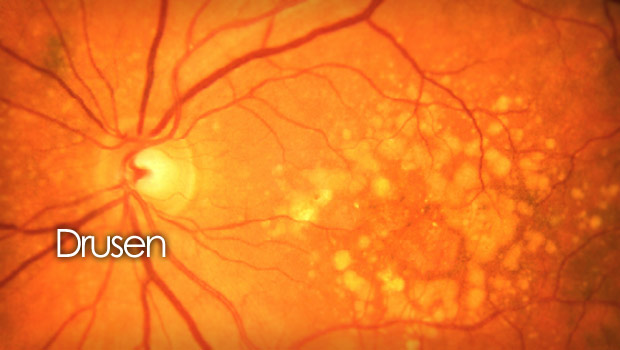“Drusen” is the plural of the German word “druse” which means node. In medical terms drusen refers to small yellowish deposits of cellular debris that at accumulate under the retina – the light-sensitive layer of cells at the back of the eye, that is essential to vision, sometimes drusen will form on the optic nerve.
Drusen occur in most people over the age of 60 and are more common in women than men.
A few small drusen can be a harmless sign of age, but more numerous and larger ones may indicate an early stage of age-related macular degeneration (AMD). – A condition that seriously impairs vision. It is a leading cause of blindness in people over 65. Drusen do not cause AMD, but is one early sign of dry AMD.
Types of drusen that have been identified:
- Soft drusen-As the condition progresses to the advanced stages drusen get larger, bleeding occurs and the light-sensitive cells that make up the macula become scarred. Soft drusen may result in a softening of the macula. The macula is a structure in the center of the retina that process stimuli in the central field of vision (straight ahead vision).
- Hard Drusen-Small deposits that tend to be spread out. Typically do not cause problems and do not require any intervention.
- Optic nerve drusen-In many cases this is benign. Optic nerve drusen is more common in children. If vision is affected it is peripheral vision.
Risk factors:
- Being female and/or Caucasian
- Family history of AMD
- High Cholesterol or cardiovascular disease
- Smoking
- Over the age of 65
Symptoms:
- Distortion of straight lines in your field of vision
- Difficulty adapting from bright lights to low lights
- Hazy or blurry vision
- Blank spot in central vision
Sources:

